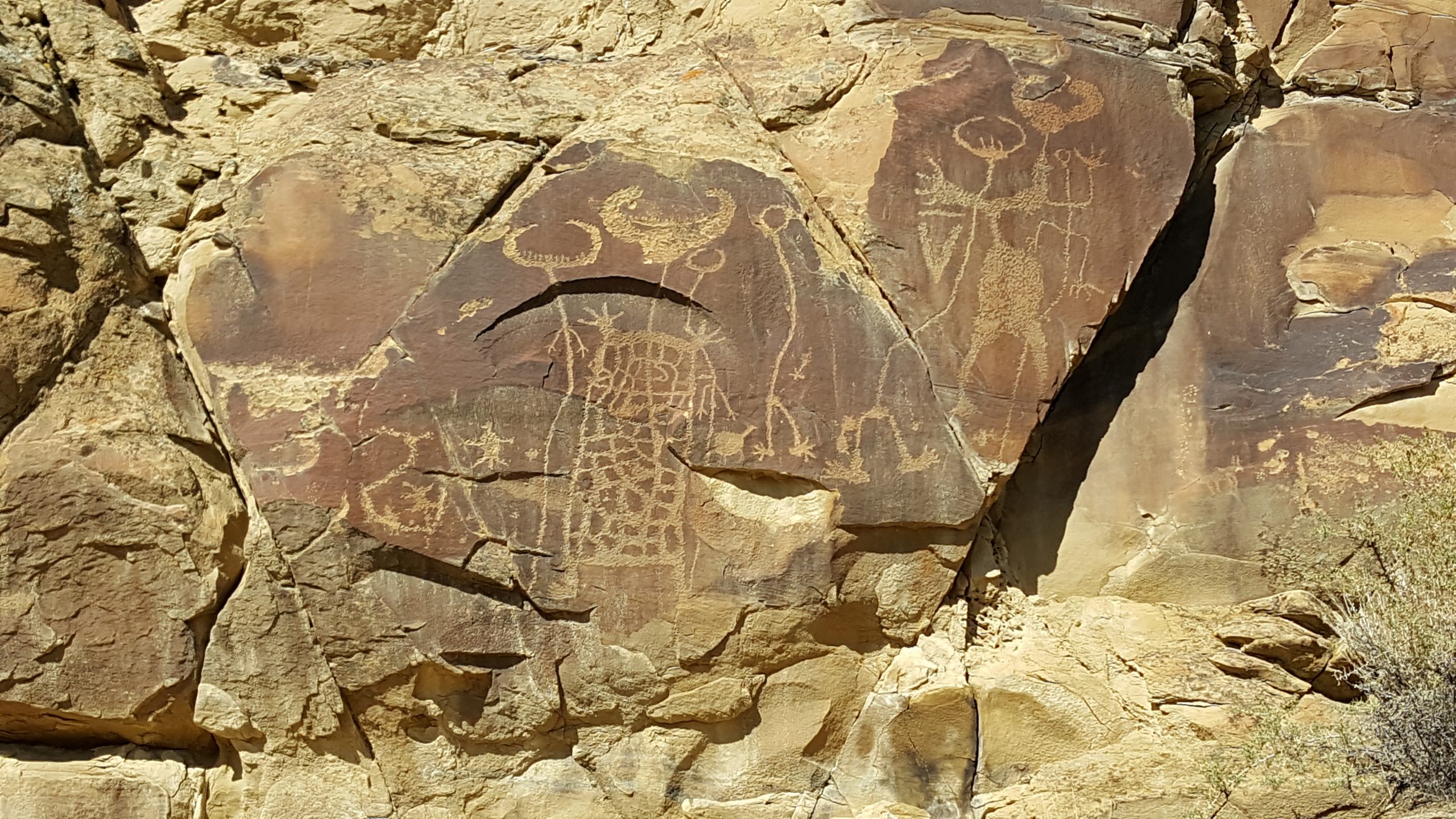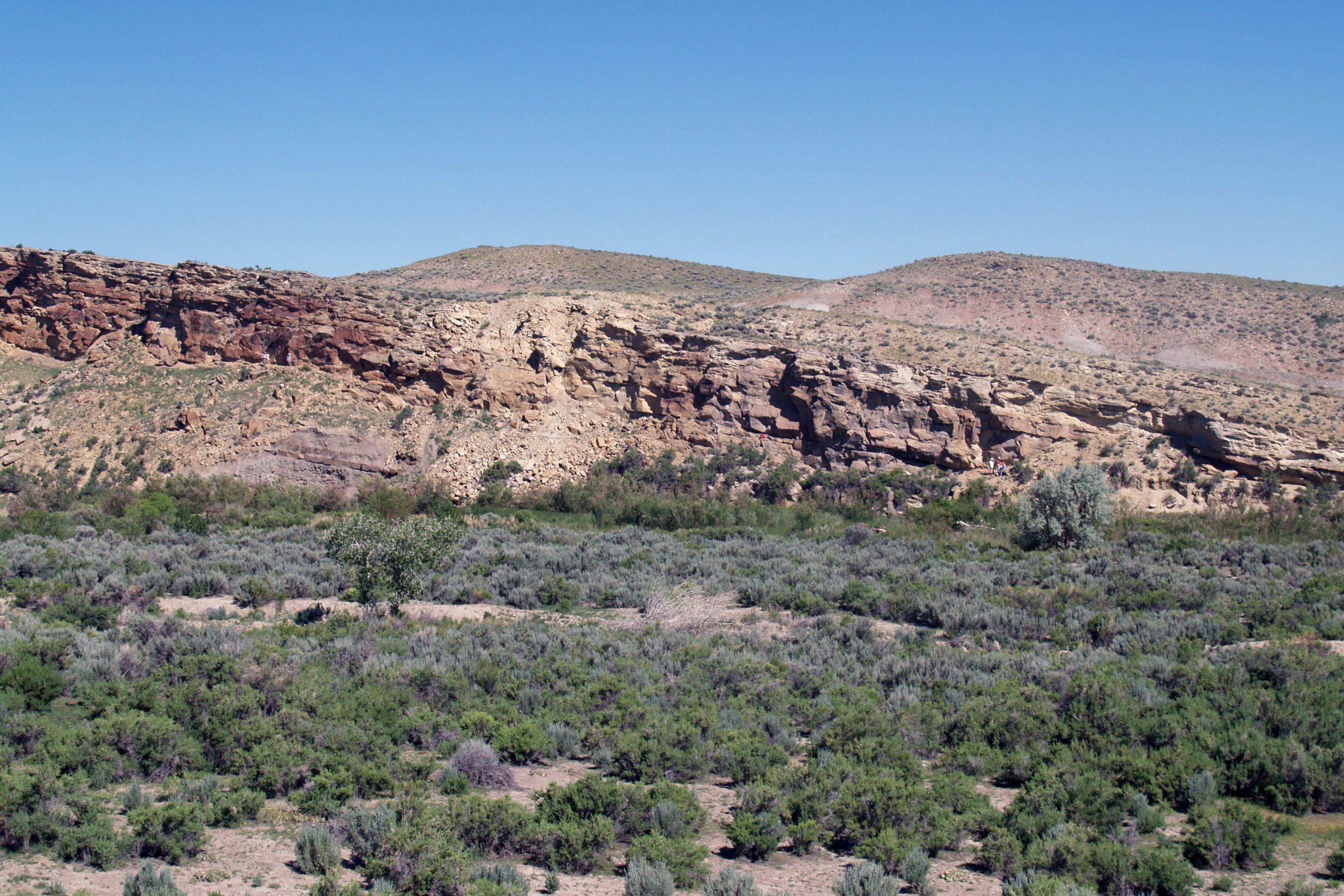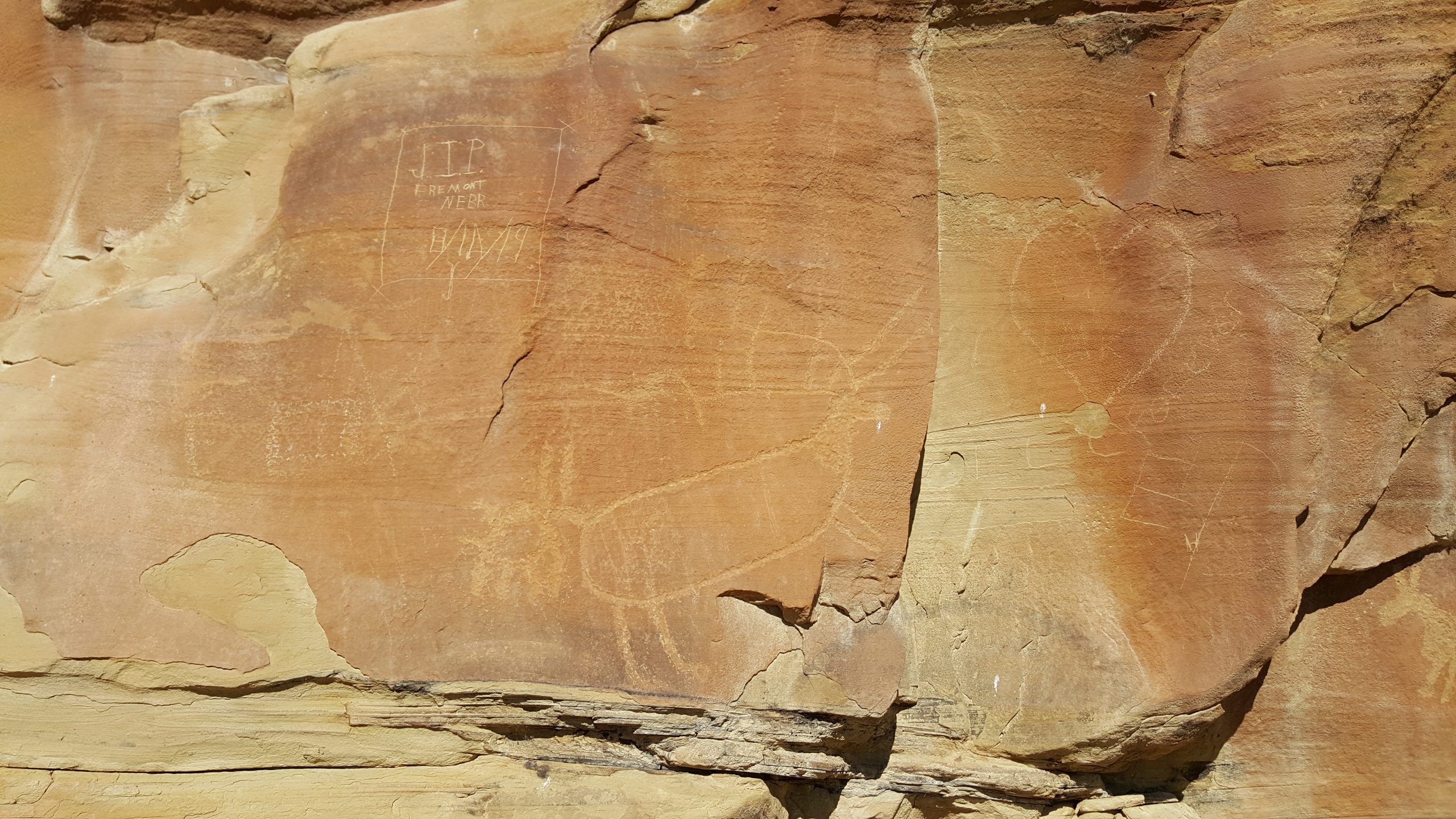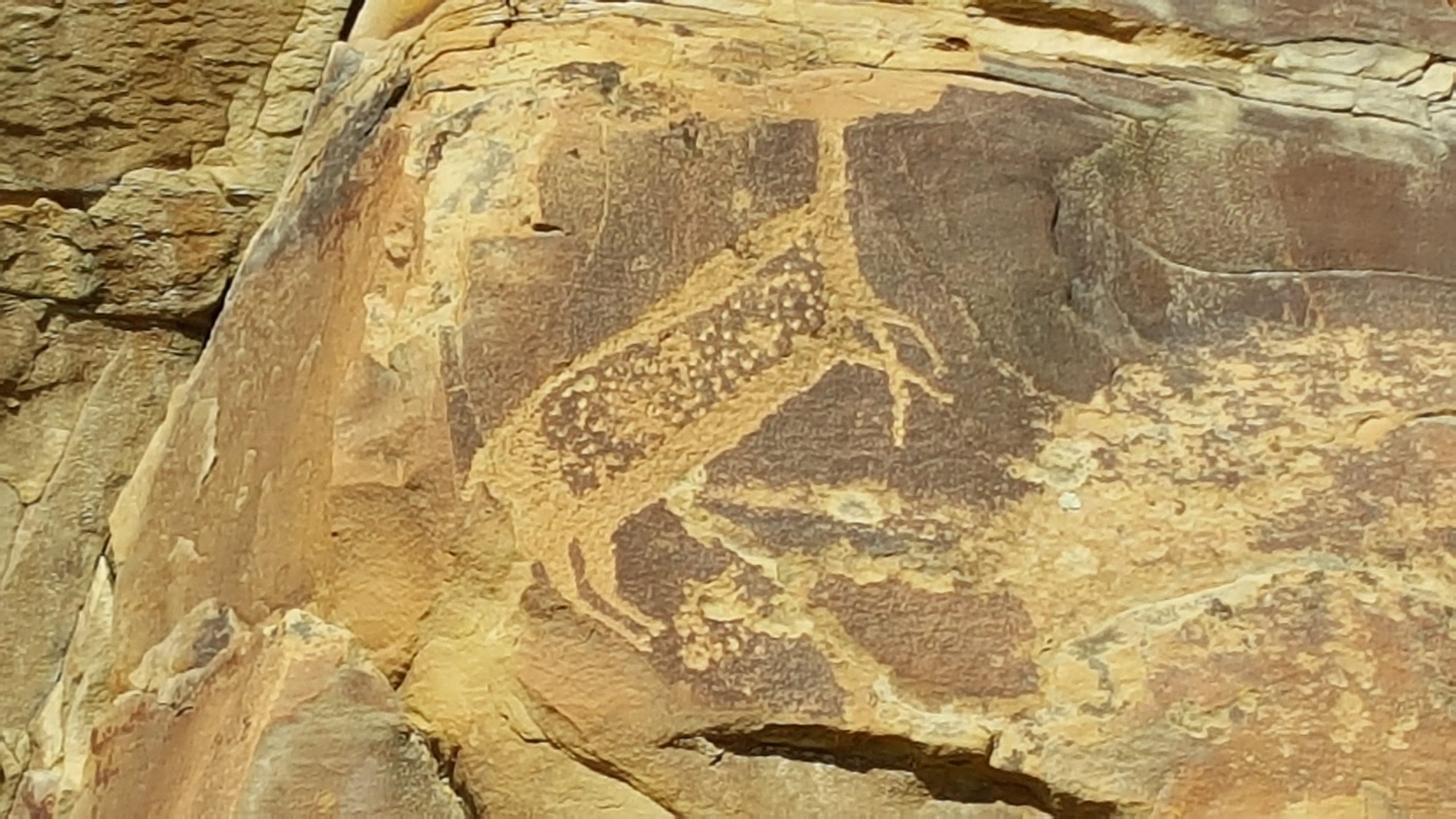The Legend Rock site is an approximately 1,600-yard-long cliff that contains more than 330 prehistoric petroglyph panels and over 900 petroglyphs. Due to the age and diversity of the rock art, it is one of Wyoming’s most important archaeological sites.
Back in the early 1970s landowners Ramul and Eddie Dvarishkis transferred the central portion of the site to the State of Wyoming to preserve it. The site became a state park called the Legend Rock Petroglyph Site, and in 1973 it was listed on the National Register of Historic Places. Three distinct concentrations of rock art, which include all of the artistic traditions known in Wyoming, were identified at the site. These concentrations are on lands owned by the state, the Bureau of Land Management (BLM), and private property owned by Richard D. Wagner.
In 1988, in advance of building a visitor’s center and bathrooms at the state park, Danny Walker, Wyoming’s assistant state archaeologist, led a cultural resource inventory that included test excavations and recordation of the rock art on state land. Radiocarbon dating of samples taken from hearth materials and anthropogenically-modified deposits indicate the site was used over a long period of time. The great majority of the dateable artifacts at Legend Rock appear to be from 7,000 to 1,500 years old. There is a bison processing area in one section of the site indicating that, in addition to being a place of shamanistic power and symbology, it was, unlike many other rock art sites throughout the Great Plains, also used as a habitation site.
There are also features that appear to be red ochre processing pits. Red ochre has been utilized in the caching of lithic material, burials, and pictograph production. Microlamination varnish analysis and radiocarbon dates derived from deposits within the petroglyphs of several rock art panels in the early 1990s suggests the oldest images date to the Paleo-Indian period, but most of the art is of the Dinwoody Tradition that is associated with the Archaic period. Dinwoody imagery consists of complex human, animal, and geometric forms that are highly stylized and deeply revered by the present-day Shoshone. Other images, such as bows and arrows, eagles, and horses date to the Late Prehistoric through Historic periods.
In the early 1990s, BLM archaeologist Mike Bies, acting on behalf of his agency and the State of Wyoming, began negotiations with Wagner to obtain the latter’s land in hopes of protecting all of the site’s rock art. For various reasons, including insufficient government funds, the parties continued to talk for nearly 25 years without reaching an agreement. Then the Conservancy stepped in. Last fall, accompanied by Bies and John Fish, a Wyoming state parks official, the Conservancy staff toured Legend Rock with Wagner and his wife Adeline. After we discussed the significance of the rock art, Wagner and his wife did the unexpected: they offered to donate their land to the Conservancy.
With this act, the Wagners have ensured that Legend Rock, in its entirety, will be protected for future generations to view and study. As an acknowledgment of our appreciation for this generous donation, the Conservancy will name the parcels the Richard D. Wagner Family Archeological Preserves at Legend Rock. The Conservancy will partner with Wyoming State Parks, the BLM, the Shoshone, and other local entities to develop a management plan for the new additions to Legend Rock.












